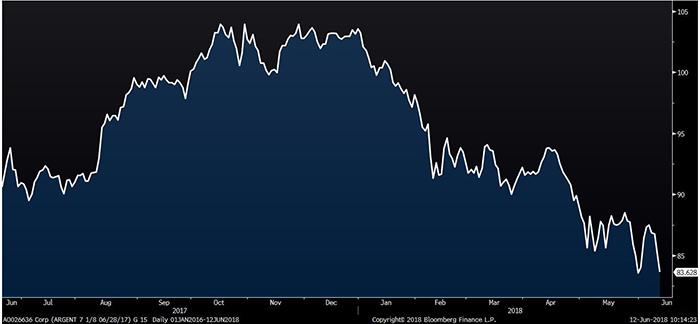Imagine having a friend who declared bankruptcy seven times. You’d be surprised if he got a mortgage.
Well, 15 years ago, in the housing bubble, he probably could have. It was probably a no-money-down loan. In fact, he probably could have gotten cash along with his mortgage.
In 2007, banks were hoping things would be different. They ignored history. But it turns out that just hoping for the best is a bad strategy. The housing bubble ended in a global financial crisis.
Investors ignore history too. They also often hope that this time will be different. But they should know better.
The Past Hold Clues to the Future
Most investors know “past performance is not a guarantee of future performance.” That’s the warning label on mutual funds. It’s been there for decades. Many exchange-traded funds (ETFs) and other investment products carry that warning.
Some take that as permission to ignore the past.
But the past is all the information we have. It’s reasonable to expect the future to be like the past sometimes. For example, if a country defaulted on its debt seven times, you might expect a default in the future.
Well, Argentina delivered an eighth default to investors. It was in 2014. That was just 13 years after the seventh default. That 2001 was the largest sovereign default in history.
Yet investors forgot about all that recently.
In 2017, Argentina sold $2.75 billion worth of 100-year bonds. That’s right. A country that defaults an average of once every 25 years convinced investors to buy bonds maturing in 2117.
For a time, the bonds traded at a premium. But that changed recently. Argentina’s latest crisis pushed the price of the bonds down by almost 20% in six months.

(Source: Bloomberg)
A Crisis Sinks the 100-Year Bonds
Argentina’s economy looks bad. The peso fell 50% in six months. Short-term interest rates hit 40%.
Trying to stop the crisis, the International Monetary Fund (IMF) loaned Argentina $50 billion. Those funds come with strings attached. IMF loans require spending cuts. That adds to the pain of the country’s citizens.
In Argentina, there’s already a lot of pain. Inflation is at 25%. The official unemployment rate is 7.2%, and 25.7% of the population lives below the poverty line.
But those numbers are probably too low. The official rate of inflation is 2.1%. That’s just one-tenth the level reported by unofficial sources. If inflation is wrong, unemployment and poverty are probably wrong as well.
History says unemployment and poverty will rise. Last time Argentina turned to the IMF, unemployment reached 20%.
This crisis appeared suddenly. But, in hindsight, it’s not a surprise that Argentina is facing another economic crisis. The surprise is that investors overlooked Argentina’s long and consistent history of problems.
Bond investors weren’t alone in their hope for Argentina. The benchmark stock market index soared 77% in 2017. Now it’s falling as policymakers try to fix the economy.
The Only Guide We Have
Thinking beyond Argentina, investors can learn important lessons from this crash.
Crises appear suddenly. Once they start, crises go further than anyone can anticipate. And the next crisis is already developing somewhere in the world.
The only protection against crises is history. The past is not a guarantee of the future, but it’s the only guide we have. If something ended badly eight times in the past, it’s foolhardy to expect a different outcome in the future.
That’s important to remember as U.S. stocks are rallying. It’s possible recent gains will go too far. And that would end badly, like it always does.
Regards,

Michael Carr, CMT
Editor, Peak Velocity Trader









